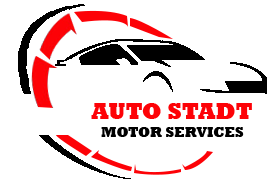Introduction to Car Body Fixing:
Car body fixing, also known as auto body repair, is a crucial aspect of vehicle maintenance and restoration. It encompasses a variety of procedures aimed at repairing and restoring a car’s exterior to its original condition following damage from accidents, weather, or wear and tear. This article delves into the different types of car body damage, the repair processes involved, tools and materials used, and tips for maintaining a vehicle’s exterior.
Types of Car Body Damage
Understanding the different types of car body damage is the first step in the repair process. Here are some common types:
- Dents and Dings
Small, localized deformations caused by minor impacts. These are often cosmetic and can be fixed relatively easily.
- Scratches and Scuffs
Surface abrasions that can range from light to deep. They often result from contact with objects or other vehicles.
- Cracked or Broken Panels
Severe damage where the metal or plastic body panels are cracked or broken, often requiring replacement or significant repair.
- Rust and Corrosion
Oxidation of the metal bodywork due to exposure to moisture and chemicals. Rust can cause serious structural issues if not addressed promptly.
- Paint Damage
Fading, chipping, or peeling of the paint caused by exposure to sunlight, chemicals, or physical abrasion.
Car Body Fixing Processes
The process of fixing car body damage involves several steps, each requiring specific techniques and tools. Here’s a detailed look at these processes:
- Assessment and Estimation
The first step is a thorough assessment of the damage to determine the extent of repairs needed. This often involves visual inspection and sometimes diagnostic tools to check for underlying issues. An estimate is then provided to the vehicle owner, outlining the cost and time required for the repairs.
- Dent Removal
For minor dents and dings, techniques such as paintless dent repair (PDR) are commonly used. PDR involves massaging the dented area from behind the panel to restore its original shape without damaging the paint.
- Panel Replacement
Severely damaged panels that cannot be repaired are replaced. This involves removing the damaged panel and fitting a new one, ensuring it aligns correctly with the rest of the body.
- Rust Repair
Rust removal typically involves sanding or grinding the affected area to remove all traces of rust, treating it with rust inhibitors, and then patching or replacing the damaged section.
- Scratch and Paint Repair
Shallow scratches can often be polished out, while deeper ones might require filling and repainting. The affected area is sanded, filled with body filler if necessary, primed, painted, and then clear-coated to blend seamlessly with the rest of the car.
- Refinishing
The final step is refinishing, which involves polishing and buffing the repaired area to restore the car’s original shine and protect the new paint.
Tools and Materials Used in Car Body Fixing
- Basic Tools
- Hammer and Dolly Set: Used for shaping and straightening metal panels.
- Sanding Blocks and Sandpaper: Essential for smoothing surfaces before painting.
- Spray Guns and Air Compressors: For applying primers, paints, and clear coats.
- Advanced Equipment
- Welders: Necessary for panel replacements and structural repairs.
- Paint Booths: Controlled environments for painting to ensure a dust-free finish.
- Diagnostic Tools: Electronic devices to assess structural integrity and alignment.
- Materials
- Body Filler: A putty used to fill dents and imperfections before painting.
- Primer: Applied before paint to ensure proper adhesion and durability.
- Automotive Paint: Specialized paint formulated for vehicles, available in various colors and finishes.
- Clear Coat: A transparent layer applied over the paint to protect and enhance its appearance.
Tips for Maintaining a Vehicle’s Exterior
- Regular Washing and Waxing
Frequent washing removes dirt and contaminants that can cause scratches and rust. Waxing adds a protective layer that helps maintain the paint’s luster.
- Parking in Shade
Whenever possible, park your vehicle in the shade or use a car cover to protect it from the sun’s UV rays, which can fade and damage the paint.
- Prompt Repair of Damage
Address dents, scratches, and rust as soon as they occur to prevent them from worsening. Early intervention can save you time and money in the long run.
- Use of Quality Cleaning Products
Use automotive-grade cleaning products and avoid harsh chemicals that can damage the paint and finish.
- Protective Coatings
Consider applying protective coatings such as ceramic or paint sealants to provide long-lasting protection against the elements.
Car body fixing is an essential aspect of vehicle maintenance that ensures your car remains in top condition both aesthetically and structurally. By understanding the types of damage, the repair processes involved, and the tools and materials used, vehicle owners can make informed decisions about their car’s care. Regular maintenance and prompt repair of any damage are key to preserving the value and appearance of your vehicle.
Looking for the best car service shop near Dubai? Check out https://autostadtmotorservices.ae/They offer top-notch services, including:
Here are some more information for your convenience:
Visit their blog AutoStadt Motor Services! for the latest updates and service tips!
